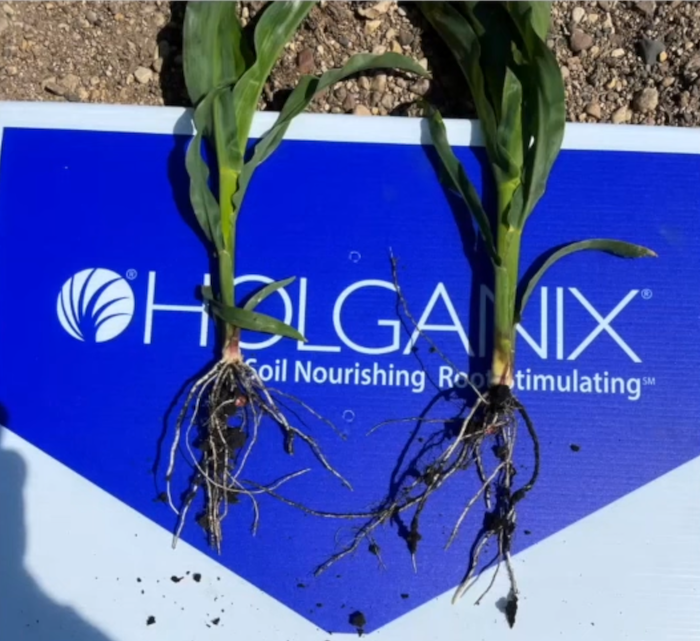Holganix carries a product called Bio 800+ that contains more than 200 species of fungi, more than 600 species of bacteria and hundreds of species of protozoa, including amoeba and nematodes. The product is ideal for farmers looking to break down crop residue faster and more effectively. Holganix Bio 800+ is applied at 0.5 gallons per acre after harvest.
“It is a complete product — you don’t need to add anything else,” Stark says. “This is living biology, and that’s what you want.”
Stark warned against using products that are powders or liquids packaged in a tightly sealed jug.“Those products cannot be diverse biology because diverse biology needs oxygen,” Stark says. “You can’t dry it down. Our product is a liquid that is refrigerated.”John Weseman, a Minnesota farmer who has been studying soil health for more than a decade, says that one of the biggest problems is farmers don’t look down enough.“We need to look down at what we are doing. We need to go out in our fields with a shovel and find out if we have worms,” Weseman says. “Soil health is what you need to get everything working, especially microbes, to where you can start reducing fertilizer use and see the advantages of what happens underneath the soil.”Nick Vos, a regenerative agriculture consultant and no-tiller in Hugoton, Kan., says that from his more than 10 years of experience studying soil health, he has learned to “stack products.”
“I don’t believe in just a single product,” Vos says. “I try to stack 5-6 products through the lifetime of that corn plant that can not only feed the microbes but also let them do what they do to feed the plant.”Weseman compared one of his customer’s corn plants that had Holganix Bio 800+ applied in furrow to a corn plant that had nothing applied in furrow, and he says the difference was “night and day.”
ROOT COMPARISON. The plant on the right had Holganix applied to it in furrow. Photo: John Weseman.
As far as how much farmers can reduce their fertilizer usage when using Holganix Bio 800+, Weseman, Vos and Stark all agree that it varies depending on several different factors. Climate, soil type and how long you've been using the product are all things to consider when determining how much to cut back on fertilizer.
"I had some customers that cut their fertilizer 40% year one, and that scares me," Stark says. "But they did that because they knew they had been dumping it on for years, and there was a lot out there in the soil."
Weseman says that from his personal experience, he sticks to a model of sampling his soil and then reducing fertilizer usage at a steady rate each year.
"As we add more years to using the biology in the soil, I reduce my fertilizer rate by 10% every time I fertilize," Weseman says.








Post a comment
Report Abusive Comment